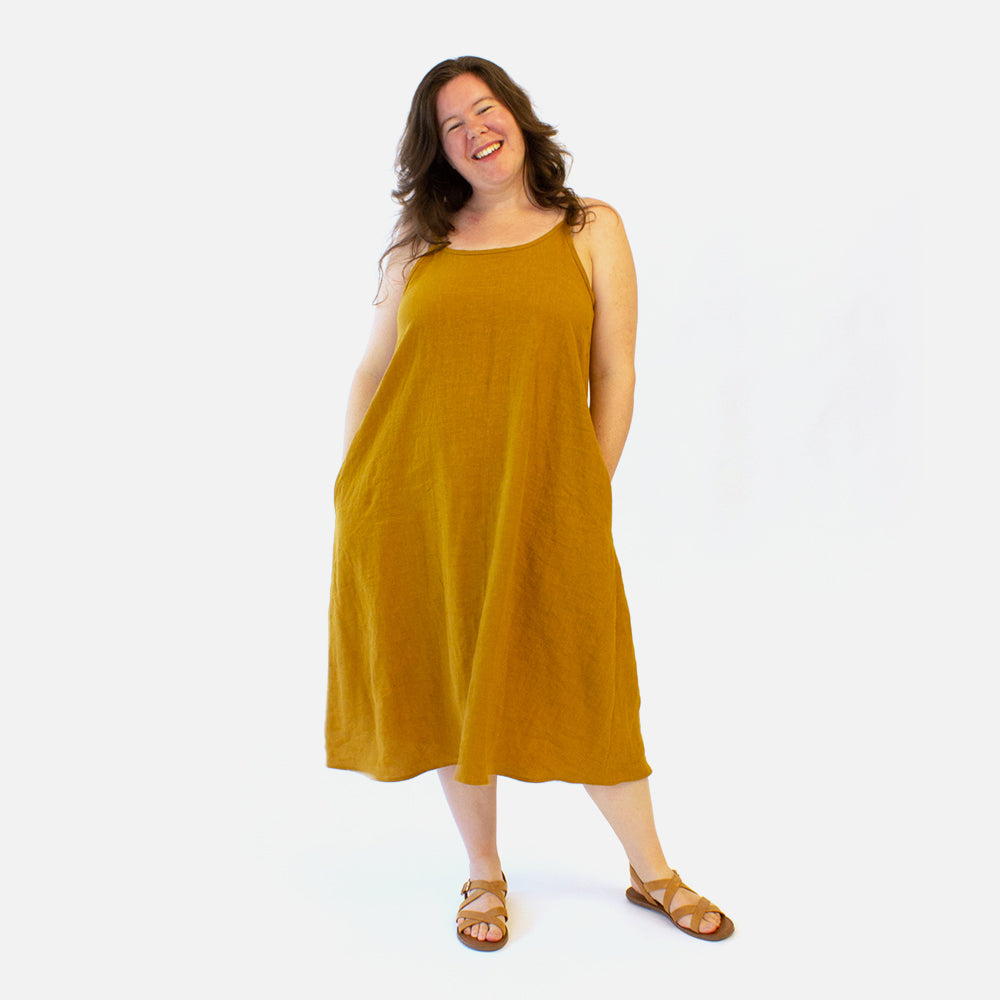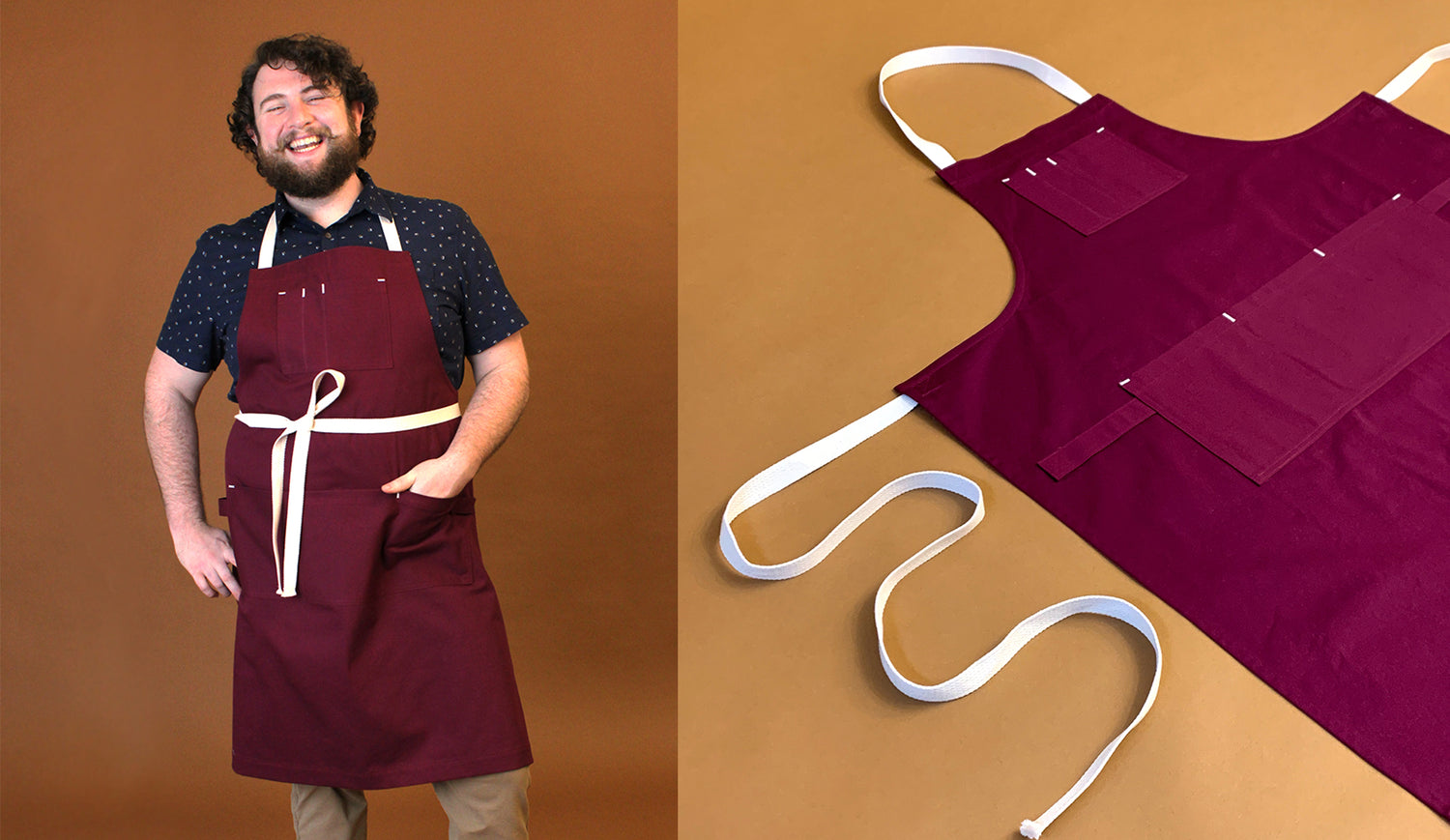 Today is the fourth installment in the Blackwood Cardigan Sewalong! We are going to wrap up the adjustments portion of the process today with narrow and broad shoulder adjustments. Tomorrow we will be cutting out the fabric and moving on to the actual sewing!
If you want to join in the fun, you can grab your copy of the Blackwood here!
Do you need a narrow or broad shoulder adjustment? The indications for this change can be subtle. First, identify where your natural shoulder is. It should be right where your arm meets your shoulder socket, and you can usually find it by lifting your arm up and down and feeling around for the 'hinge'. Now, try on your muslin and take a look at your fit. Is the shoulder seam sitting up from your natural shoulder? Are you seeing pulling lines radiating from the shoulder seam? You might want to try a broad shoulder adjustment. Is the shoulder seam lower than your natural shoulder? Do you have extra fabric pooling at the armpit or baggy sleeves? You might want to try a narrow shoulder adjustment.
Today is the fourth installment in the Blackwood Cardigan Sewalong! We are going to wrap up the adjustments portion of the process today with narrow and broad shoulder adjustments. Tomorrow we will be cutting out the fabric and moving on to the actual sewing!
If you want to join in the fun, you can grab your copy of the Blackwood here!
Do you need a narrow or broad shoulder adjustment? The indications for this change can be subtle. First, identify where your natural shoulder is. It should be right where your arm meets your shoulder socket, and you can usually find it by lifting your arm up and down and feeling around for the 'hinge'. Now, try on your muslin and take a look at your fit. Is the shoulder seam sitting up from your natural shoulder? Are you seeing pulling lines radiating from the shoulder seam? You might want to try a broad shoulder adjustment. Is the shoulder seam lower than your natural shoulder? Do you have extra fabric pooling at the armpit or baggy sleeves? You might want to try a narrow shoulder adjustment.
 If you are not making a muslin of your project, you can try on a previous make, like a t-shirt, and look at the fit there. Then, compare that pattern piece to your next project pattern piece to see if any adjustments might need to be made.
To determine the amount to adjust, I like to eyeball it. With your muslin on, take note of the distance from your natural shoulder seam to shoulder seam. This is your adjustment amount.
If you are not making a muslin of your project, you can try on a previous make, like a t-shirt, and look at the fit there. Then, compare that pattern piece to your next project pattern piece to see if any adjustments might need to be made.
To determine the amount to adjust, I like to eyeball it. With your muslin on, take note of the distance from your natural shoulder seam to shoulder seam. This is your adjustment amount.
 Note: Also look for other indications of pulling or baggy fit. You may need to go up or down a size overall.
Let's get started!
First, mark the seam allowance on your front pattern piece. Draw two lines. The first should go from the center of the shoulder to about 1/3 of the way down the armscye. The second line should be perpendicular to the first and go to the corner of the shoulder seam.
Note: Also look for other indications of pulling or baggy fit. You may need to go up or down a size overall.
Let's get started!
First, mark the seam allowance on your front pattern piece. Draw two lines. The first should go from the center of the shoulder to about 1/3 of the way down the armscye. The second line should be perpendicular to the first and go to the corner of the shoulder seam.
 Next, cut the lines, starting with the first. Cut down from the shoulder seam, stopping at the seam allowance marking. Clip into the seam allowance, leaving a little hinge of paper. Cut up into the second line, also stopping at the seam allowance and leaving a hinge.
Next, cut the lines, starting with the first. Cut down from the shoulder seam, stopping at the seam allowance marking. Clip into the seam allowance, leaving a little hinge of paper. Cut up into the second line, also stopping at the seam allowance and leaving a hinge.

For a Broad Shoulder Adjustment Swing the two triangles out to make some room. Place extra paper under your pattern piece and measure out from the seam allowance. Measure the amount you need to adjust and make a mark.
 Work with the hinged triangles to bring the seam allowance to meet the marking. Your triangles will be overlapping, this is what we want.
Work with the hinged triangles to bring the seam allowance to meet the marking. Your triangles will be overlapping, this is what we want.
 Tape everything down and draw a straight line to true up the shoulder and a new curve to smooth out the armscye. There may also be a small gap in the upper corner to fill in.
Tape everything down and draw a straight line to true up the shoulder and a new curve to smooth out the armscye. There may also be a small gap in the upper corner to fill in.
 Cut off the excess paper and there you have it, you have made a broad shoulder adjustment! Don't forget to make the same changes to both the front and back of your pattern!
Cut off the excess paper and there you have it, you have made a broad shoulder adjustment! Don't forget to make the same changes to both the front and back of your pattern!

For a Narrow Shoulder Adjustment Measure in from the seam allowance and make a mark. Your measurement should equal your desired adjustment amount.
 Work with the hinged triangles to bring the seam allowance to meet the marking. Your triangles will be spread apart, this is what we want.
Work with the hinged triangles to bring the seam allowance to meet the marking. Your triangles will be spread apart, this is what we want.
 Tape paper underneath to fill in the gap. Draw a straight line to true up the shoulder and a new curve to smooth out the armscye. There you have it, you have made a narrow shoulder adjustment! Don't forget to make the same changes to both the front and back of your pattern!
Tape paper underneath to fill in the gap. Draw a straight line to true up the shoulder and a new curve to smooth out the armscye. There you have it, you have made a narrow shoulder adjustment! Don't forget to make the same changes to both the front and back of your pattern!

It is important to note that if you are making a large adjustment (more than 3/4"), you may want to consider adjusting the sleeve cap height to compensate for the amount added or removed from the shoulder. For a broad shoulder adjustment, you can remove height from the sleeve, and for a narrow shoulder adjustment, you can add height.

I hope this post on how to do a narrow or broad shoulder adjustment has been helpful! Do you have a different method for making this change? I’d love to hear about it!






